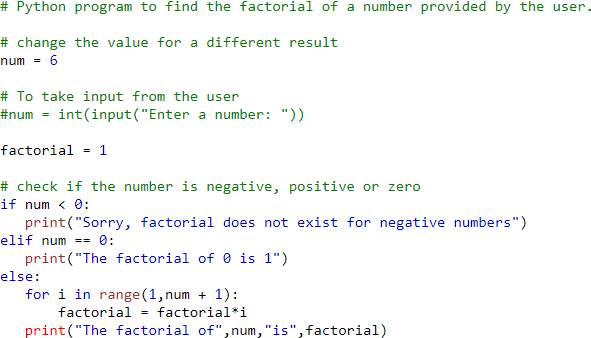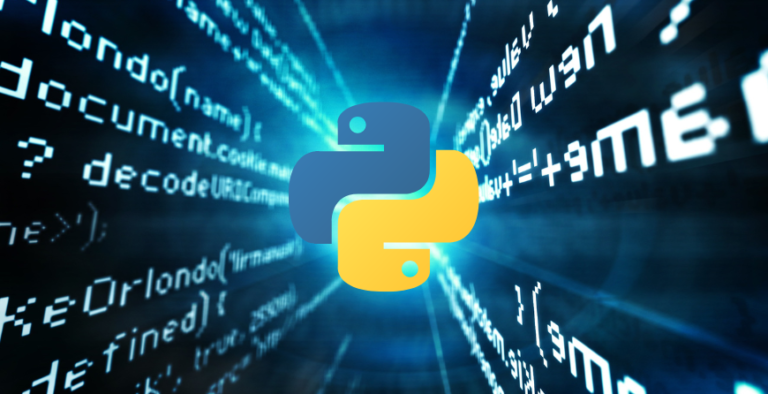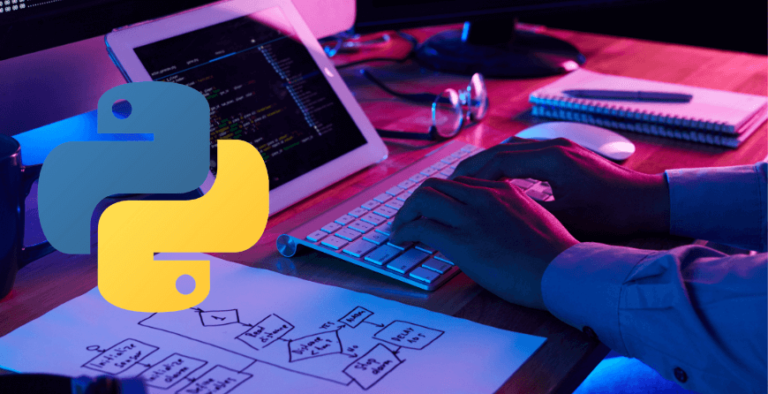Python Interview Questions

Outline
Read, learn, practice and prepare yourself with these sure-shot python interview questions to crack your next interview for a python developer job.
Read, learn, practice and prepare yourself with these sure-shot python interview questions to crack your next interview for a python developer job.
We have compiled the top python interview questions and answers for you to prepare for your next interview. We have divided the questions into three categories based on experience.
✔️ Python Interview Questions for Beginners
✔️ Intermediate Python Interview Questions
✔️ Advanced Python Interview Questions
We have selected the most asked python questions in any interview. Each of these questions represents some core insights on the Python programming language.
But first let’s discuss – Why python is one of the top programming languages? Why is there high demand for Python developers? What makes python development a competitive job?
Python development has become pretty competitive. In a 2021 survey, 41% of microservice developers said they would be using Java in 2021. It also states that JavaScript and Python are two popular programming languages used by microservice developers. We can see that python is instantly competitive in the microservices sector.
The popular cloud platform among python developers is AWS. Among the beginners and intermediate python developers, Heroko and PythonAnywhere are more popular.
In 2022, SQL and Java were the other two languages with more popularity than Python. Learn these two languages along python and increase your chances of getting hired.
Amazon Web Services (AWS) topped the list of cloud computing platforms used by Python developers in 2020 with a share of 53%. In fact, Python programmers with more experience tend to favour AWS and DigitalOcean, while programmers with less experience—up to two years of professional experience—tend to favour Heroku and PythonAnywhere.
SQL and Java were a couple of the highly sought-after skills for the information technology sector in 2022. With almost 10% of respondents considering Python to be one of the most in-demand IT skills in 2022, it came in fourth place.
According to a statista report of April 2019, there were more data science job postings and 76% of those job postings on linkedin required Python programming knowledge.
The above statistics prove that python is indeed one of the most sought-after programming languages.
Now, let’s learn top interview questions on Python. Let’s start.
Let us look the chart to get an idea of salaries according to location:
Python Interview Questions for Beginners
1. What is a class in Python?
A class is a particular object type. It is created by executing a class statement. Many Developers uses class objects as templates. They use it to create class instance objects that can embody both the data structure and program routines specific to a data type.
2. How to create a string containing a single quote?
>>> str1 = “that is jerry’s ball”
3. Is Python case sensitive?
4. What is pickling and unpickling?
Unpickling is the process of obtaining the original Python objects from the stored string representation.
5. What are modules in Python? Which Python built-in modules are most frequently used?
Developers like to use the following built-in modules:
- -os
- -sys
-random
-data time
-JSON
6. How can we manage memory in Python?
Python also includes a built-in garbage collector to reuse any unused memory for the private heap space.
7. What are tuples and lists? What distinguishes the two in particular?
But what actually distinguishes the two? The main distinction between the two is that while tuples are immutable objects, lists are mutable objects. This means that while tuples remain constant and cannot be changed in any way, lists can be changed, added to, or sliced as needed.
8. How is Python used in different cloud platforms like Azure, AWS & Google Cloud?
Additionally, Python is now widely used in Google Cloud to build Cloud Run, AI notebooks, and deployment templates, among other things.
9. How do local and global variables operate?
10. What is an IDE? Name some of the best Python IDEs?
Some key features of a good IDE for a Python environment include the ability to save and reload your code files, run code directly from the environment, support for debugging, syntax highlighting, and automatic code formatting.
Developers like the following General IDEs that supports Python:
– Sublime Text
– Atom
– Eclipse + PyDev
Special editors and IDEs for Python:
– Spyder
– PyCharm
– Thonny
Intermediate Python Interview Questions
11. How Can You Copy Objects in Python?
copy.copy() for shallow copy
copy.deepcopy() for shallow copy
12. What is a map function in Python?
Look at the following example:

13. How can we delete files in Python?
consider the code below:

14. Name some Python tools that help in finding bugs or performing static analysis?
The extraordinary library of Python packages has many tools to find bugs and perform static analysis.
Pylint and Pyflakes perform fundamental checks that will enable us to find bugs sooner than later.
Python source code can be examined by static type checkers like Mypy, Pyre, and Pytype.
15. If your Python program is slow then list some ways to optimize and improve its performance?
- – Instead of trying to sprinkle micro-optimization techniques throughout your code, you can achieve much greater benefits by making your algorithms faster (or switching to a faster algorithm).
- – Pick the appropriate data structures.
– Abstractions frequently lead to indirections and add extra work for the interpreter. Your programme will run more slowly if the levels of indirection outweigh the amount of useful work completed. Excessive abstraction should be avoided, especially when it takes the form of tiny functions or methods.
16. What is type conversion in Python?
int() converts the data type into float type
float() converts the data type into float type
ord() character to integer conversion
hex() converts integers data type into hexadecimal data type
oct() converts integer data type into octal
tuple() This is a function. It is used to convert to a tuple.
set() This function returns the type after converting to set.
list() This function is used to convert any data type to a list type.
dict() This function is used to convert a tuple of order (key, value) into a dictionary.
str() Used to convert integer into a string
complex(real,imag) This function is used for conversion of real numbers to complex(real,imag) numbers.
17. What rules does the local and global variable follow in Python?
Though initially a little surprising, a moment’s thought clarifies this. One benefit of making assigned variables global is that it prevents unintended side effects. On the other hand, you would use global constantly if it were a requirement for all global references. Every reference to a built-in function or to a part of an imported module would need to be declared as global. The value of the global declaration for identifying side effects would be negated by this clutter.
18. Why are Iterator Objects important?
– It is a straightforward, practical, and effective programming pattern once mastered.
– It has numerous, wide-ranging uses.
– Lexically separating the producer code from the consumer code is helpful. This makes it simpler to identify issues and to localise and fix code without causing unintended side effects.
– We can define our own abstract sequences—sequences whose composition is determined by our computations rather than by their presence in a container—by implementing our own iterators (and generators). In fact, as each value is requested, our iterator can calculate or retrieve the requested value.
19. How do I generate random numbers in Python?

There are numerous additional specialised generators included in this module, including:
int() – – It is used to choose an integer between the range [a, b).
uniform(a, b) – – – It is used to choose a floating point number between the range [a, b)
normalvariate(mean, sdev)
Several higher-level operations directly affect sequences, including:
choice(S) – – It is used to select a random element from a sequence.
shuffle(L) – – shuffles a list while it is still in use, or permutes it.
You can also instantiate the Random class to create multiple independent random number generators.
20. What is slicing in Python?
Syntax:

Python Interview Questions
21. What is Polymorphism in Python?
22. Define encapsulation in Python?
23. What is pandas?
24. Why use NumPy arrays instead of lists in Python?
– Because NumPy arrays use much less memory, the code is more effective.
– NumPy arrays run more quickly and don’t require a lot of runtime processing.
– Because of its highly readable syntax, NumPy is simple and practical for programmers.
25. State the differences between Django, Pyramid, and Flask.
- – Pyramid was made with larger apps in mind. It offers flexibility to developers and enables them to use the best tools for their projects. The developer has access to the database, URL architecture, templating style, and other options. Pyramid is easily adaptable.
- -A “microframework” called Flask is made for simple, compact applications. In a flask, external libraries are necessary.
-Pyramid and Django both lend themselves to more extensive applications. It contains an ORM.
26. What is the Lambda function? Why is it used?
An anonymous function is a lambda function. You can pass as many parameters as you like into this function, but only one statement.
– Lambda function assigning to a variable
– Lambda function wrapping in another function
27. Explain multithreading in Python.
The construct known as the GIL, or Global Interpreter Lock, is included in the package. It makes sure that only one thread is ever active at once. A thread obtains the GIL, does its work with it, and then transfers it to the following thread.
Because of how quickly this occurs, users may believe that multiple threads are working simultaneously. This is obviously not the case since they are merely sharing the same CPU core. GIL passing increases the overall execution overhead.
As a result, using the threading package is not advised if your goal is to speed up the execution.
28. Write a sorting algorithm for a set of number in Python?

29. Write a program in Python to check if a number is prime?


30. Write a Python program to find the factorial of a number.


Conclusion
Remember that the hiring process involves more than just technical expertise. To ensure that you land a high paying Python developer job, both previous experience and soft skills are crucial.
A lot of the Python interview questions are open-ended, so keep that in mind. Interviewers are interested in your reasoning, not just the answer you memorised. Always be ready for follow-up questions regarding how you arrived at your answer. Describe your thought process.
Good luck with your upcoming Python interview! You can go through our python developers jobs here.


![Top 10 Freelance Websites to Hire Python Developers in 2023 [Updated]](https://optymize.io/wp-content/uploads/2022/09/Hiring-Python-Developers-1-768x394.png)


